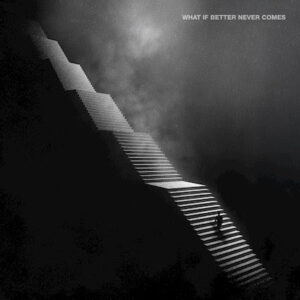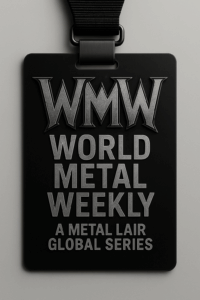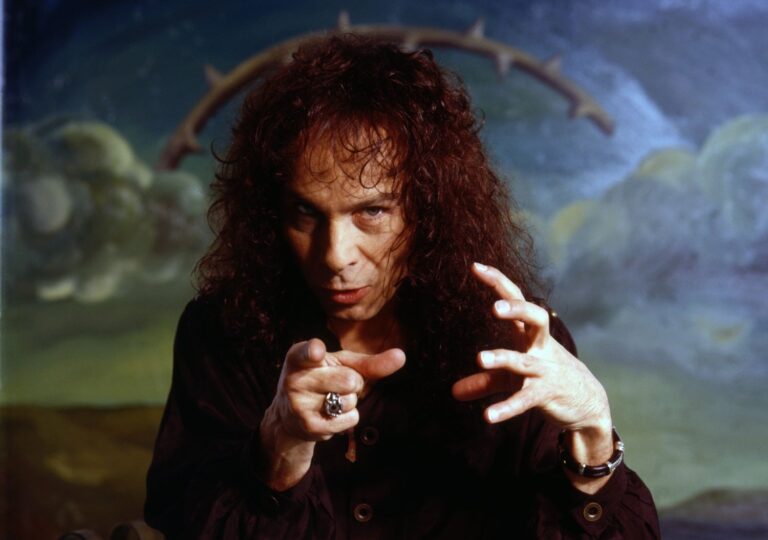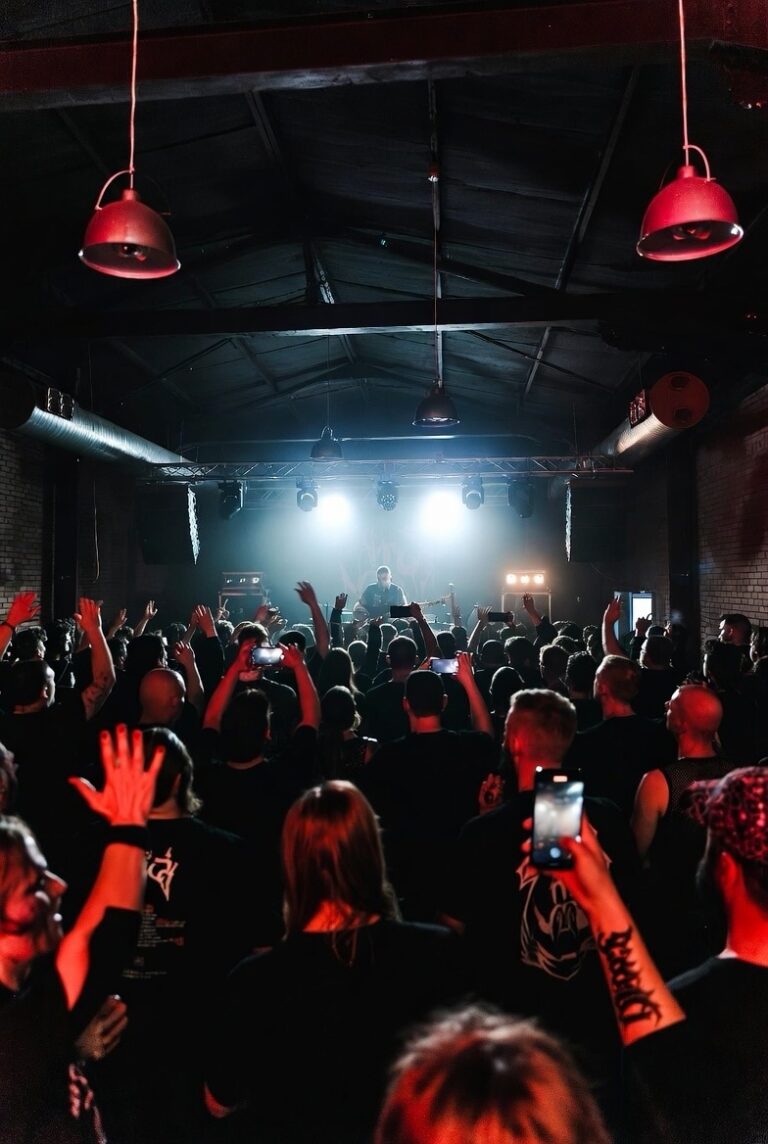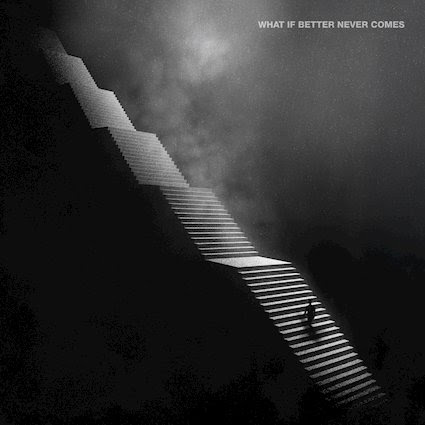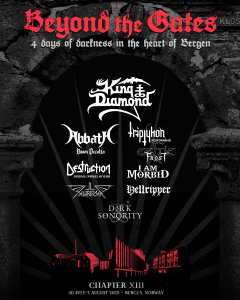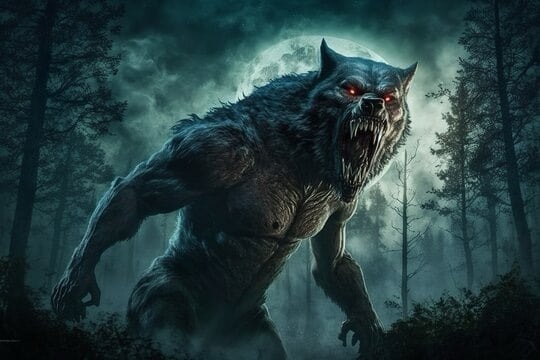
Written By Caine Blackthorn
Metal is a genre deeply tied to specific places. Its sound, themes, and imagery are often rooted in the environments from which it originates. From the windswept, forests of Norway that gave rise to black metal, to the industrial decay of the American Midwest that birthed doom and sludge, metal’s unique ability to reflect the emotional and psychological landscape of its creators is undeniable. This phenomenon, which we can explore through the lens of psychogeography, a term traditionally used to study the effects of the urban environment on human emotions and behavior can offer new insights into the relationship between music and place.
The Role of Place in Metal’s Identity
Psychogeography, as a discipline, focuses on how specific places influence the mood, behaviors, and psyche of individuals who inhabit them. For metal, this idea extends beyond simply being influenced by a place’s aesthetic. It suggests that the physical, social, and cultural environments in which bands are situated have a profound impact on their artistic output. Metal bands often create an audio and visual identity that is intrinsically tied to their surroundings. Whether those are urban centers ravaged by decline, remote rural areas, or sprawling urban environments with their own unique tensions and stories.
Black Metal and the Norwegian Fjords: Nature’s Darkness
One of the most striking examples of psychogeography in metal is Norway’s black metal scene, which arose in the early 1990s. Norway’s landscapes, rugged fjords, dense forests, and long winters are inextricably tied to the sound and aesthetic of black metal. The natural beauty of Norway, with its harsh, unforgiving weather and vast, desolate spaces, has given rise to the cold, atmospheric soundscapes and themes of isolation, death, and darkness that characterize black metal.
Bands like Burzum, Darkthrone, and Mayhem draw heavily on the stark contrast between Norway’s breathtaking beauty and its harsh, unforgiving environment. The long, cold winters, the darkness that stretches for months, and the mystique of ancient Viking and Norse history influence the haunting atmospheres in their music. Black metal’s raw, lo-fi production often mirrors the bleakness of its surroundings, while its imagery often involving the woods, snow and ancient ruins reinforces the connection to nature and a sense of isolation from modern society. The geography of Norway, with their traditions and folklore, represent a symbolic departure from industrialization and urbanization, aligning black metal’s philosophy with anti-establishment and anti-modern ideologies.
Doom Metal and the American Rust Belt: Decay and Despair
In stark contrast to the ethereal, nature-driven black metal, doom and sludge metal are often shaped by industrial decay and the harshness of post-industrial urban environments. The American Midwest, particularly the so-called “Rust Belt,” is home to some of the most iconic doom and sludge bands, such as Sleep, Mastodon, and Electric Wizard. These bands are deeply influenced by the crumbling factories, abandoned steel mills, and decaying urban centers that mark the region’s landscape. The psychological impact of living in areas once bustling with activity, now littered with abandoned buildings and unemployment, creates a unique environment for the formation of doom metal’s signature slow, crushing, and melancholic sound. The sound of doom is often likened to the weight of heavy machinery, the crushing weight of economic collapse, and the sense of hopelessness that pervades these areas. It’s a sound that conveys a sense of entropy, musically slow, heavy, and deliberately oppressive, mirroring the decay of the places it reflects. Doom metal’s lyrics often address themes of existential despair, societal decay, and the collapse of the American dream, echoing the experiences of those who live in the Rust Belt. The bleak, distorted sound of bands like Eyehategod and Iron Monkey is informed not only by the environment of industrial decline but also by the social alienation that accompanies it. In this sense, the music becomes a sonic reflection of both personal and communal trauma.
The Intersection of Post-Metal, and Beyond
While doom is primarily associated with decay, sludge metal takes this connection further, merging the heaviness of doom with the gritty, rebellious ethos of punk. Bands like The Melvins and Neurosis blur the lines between genres, creating music that is at once heavy and experimental. The psychogeographic relationship between these bands and their environments is more nuanced, as they focus on darker aspects of society, poverty, alienation, and the erosion of traditional values.
Post-metal, a subgenre that emerged in the late 1990s and early 2000s, takes this sense even further. Bands like Isis, Godflesh, and Russian Circles use vast, ambient soundscapes evoking the sense of space and isolation found in urban environments, vast landscapes, or the empty aftermath of destruction. Post-metal’s sprawling, cinematic soundscapes give a feeling of desolation, often drawing on both natural and industrial settings. These bands employ dynamic shifts between silence and overwhelming noise to convey the emotional weight of places scarred by conflict, collapse, or environmental ruin.
Lesser-Known Regional Subgenres: The Sound of Place
While the connection between major subgenres of metal and place is well-documented, there are also lesser known regional subgenres whose sounds and aesthetics are deeply influenced by their environments. Take, for instance, the emergence of folk metal in regions like Finland, Sweden, Ireland, and Eastern Europe. Bands such as Korpiklaani Finntroll and Ensiferum blend elements of metal with traditional folk music, creating a sound that reflects their rural and mythologically rich landscapes. The dense forests of Finland, the rolling hills of Ireland, and the rugged, historic ruins of Eastern Europe contribute to the creation of a sound that is both primal and epic.
Similarly, thrash metal in places like California has had a profound influence on the thrash metal scene, particularly with iconic bands like Slayer, Metallica, and Megadeth. The state’s unique culture, geography, and history have shaped both the music these bands created and the personas they developed. Metallica’s early sound was heavily shaped by California’s vibrant, diverse culture and its burgeoning heavy metal scene. The state’s growing music industry, especially in cities like Los Angeles and the Bay Area, played a key role in their exposure to other influential bands and the general atmosphere of rebellion and freedom that defined the era. Metallica’s early thrash sound was influenced by the fast-paced, aggressive energy of the local punk scene and the more polished, grandiose rock elements from bands like Led Zeppelin and Black Sabbath. Slayer, formed in Huntington Park (a suburb of Los Angeles), was significantly shaped by the darker, more violent undercurrents of California’s culture. The band’s ferocious sound and controversial, sometimes shocking themes in their lyrics, like violence, war, and death, mirrored the chaos and aggression found in California’s urban landscapes. Megadeth, founded by Dave Mustaine after his departure from Metallica, emerged from the Bay Area’s thrash metal scene, which was quickly gaining global recognition during the early 1980s. California’s thriving music industry, particularly in the Bay Area (home to other thrash pioneers like Exodus, Testament, and Death Angel), gave Megadeth the platform to rise.
Psychogeography and Death Metal: The Sonic Landscape of Violence, Decay, and Human Dystopia
Death metal is often seen as the most extreme and visceral of the metal subgenres, known for its guttural vocals, blast beats, and lyrics that revel in graphic depictions of violence, gore, and decay. While these themes may seem disconnected from the idea of psychogeography—an exploration of the relationship between place and human emotion—death metal’s sound, imagery, and lyrical content are deeply intertwined with the environments and social conditions that shape it. In many ways, death metal’s themes of death, decay, and violence can be read as a reflection of the alienating, oppressive landscapes from which these bands emerge. Death metal bands like Cannibal Corpse and Cattle Decapitation are known for their brutal, often grotesque imagery, which centers on the human body—its mutilation, dissection, and destruction. This graphic violence can be seen as a reflection of the alienating, dehumanizing aspects of modern life. Death metal’s emphasis on violence is not just a desire to shock or provoke; it is often a response to the disillusionment and anxiety caused by the environments in which these bands are formed.
While death metal has its roots in places like Florida (home to Death and Morbid Angel), Sweden (with Opeth, Entombed and Dismember), and the United States, the genre has found expression across the globe, and its themes of death, decay, and destruction resonate in a wide variety of locales. Whether in the war-torn landscapes of Eastern Europe, the politically oppressive climates of South America, or the industrialized suburbs of Japan, death metal reflects a universal experience of confronting human mortality, violence, and the destruction of the environment. In regions like Brazil, for instance, death metal bands such as Krisiun reflect the brutal social realities of life in a country marked by poverty, inequality, and political instability. Their violent and nihilistic lyrics echo the harshness of their environment, where violence is often a daily reality. Similarly, in the post-Soviet states of Eastern Europe, bands like Decapitated have used death metal to reflect the social and political collapse following the fall of communism, often channeling a sense of chaos and anarchy into their music.
Psychogeography and Power Metal: A Sonic Journey Through Fantasy, Heroism, and Escapism
While death metal often reflects decay, violence, and alienation, power metal occupies a very different emotional and geographic space in the metal world. Known for its epic themes of heroism, fantasy, and triumph, power metal is a genre that draws its energy from a sense of escapism away from the harsh realities life and societal collapse, and into a world of swords, sorcery, and larger than life battles. However, this doesn’t mean that power metal is exempt from being shaped by its environment. In fact, the landscapes and cultures from which power metal emerges play an important role in shaping its sound, imagery, and lyrical content. Power metal’s unique fusion of escapism and idealism is often directly informed by the specific geographic and cultural contexts in which bands are formed.
Unlike death metal’s gritty focus, power metal often thrives on larger than life narratives. But much like other subgenres, power metal’s thematic content is shaped by its cultural and geographic origins. For example, bands from regions steeped in rich historical and mythological traditions, such as Germany, Finland, and Italy, often draw heavily on local folklore, legends, and national histories to craft their music. The settings these bands come from influence not only their lyrical content but the grandeur and tone of their music, which is often designed to evoke feelings of hope, triumph, and the eternal struggle between good and evil.
The development of power metal is deeply intertwined with European traditions. These regions, with their rich medieval and mythological histories, have provided a fertile backdrop for the formation of power metal’s fantastical lyrics and epic storytelling.
For instance, Germany is the birthplace of some of the genre’s most influential bands, such as Helloween, Blind Guardian, and Gamma Ray. The country’s medieval castles, folklore, and Romantic ideals and the supernatural have had a profound influence on the sound and themes of these bands. Blind Guardian, in particular, is known for its literary references to fantasy works like J.R.R. Tolkien’s The Lord of the Rings and Richard Wagner’s operas. Their music reflects both the grandeur of Germanic history and the escapism found in fantasy literature. The lush, orchestral arrangements and soaring vocals are designed to transport listeners to fantastical worlds, far removed from the modern, industrialized landscape.
Similarly, Helloween’s Keeper of the Seven Keys albums, one of the cornerstones of the power metal genre draw from themes of fate and magic, combining them with a sound that is at once melodically uplifting and deeply energetic. The band’s ability to create an emotional journey with their music reflects a desire to escape the often grim realities of everyday life.
The Gothic Landscape of Germany and Medieval Influences
The rural regions and historical architecture of Germany plays a significant role in the psychogeography of Powerwolf’s music. The country is rich in history, with its towering castles, old churches, and centuries-old folklore. This cultural backdrop influences the band’s iconic aesthetic, which blends gothic horror with a sense of reverence for traditions. Powerwolf’s visual identity marked by images of wolves, crosses, and knights directly evokes the imagery of the Holy Roman Empire, medieval European myths, and Christian iconography, all of which are deeply rooted in Germanic and broader European history.
Bands like Powerwolf often looks to their homeland as a source of inspiration for the grandiosity and drama that defines their music. The towering castles such as Neuschwanstein Castle, or the many ruins scattered across the countryside, provide an atmospheric backdrop that feels simultaneously distant and eerily familiar. This geographic landscape aligns perfectly with the band’s lyrical content, which often deals with themes of darkness, divine power, and supernatural battles with both the physical and metaphorical sense of place.
The band’s albums, like Lupus Dei and Preachers of the Night, are filled with references to religious themes, gothic imagery, and mythical creatures. This is in part because Germany, like much of Europe, has a long history of Catholicism and Protestantism, and these religious tensions seep into the band’s musical themes. Songs like “Blessed & Possessed” and “Demons Are a Girl’s Best Friend” reflect a world where divinity, the supernatural, and religious ritual collide, creating a sonic universe steeped in an eerie sense of reverence and the battle between good and evil.
Conclusion: The Landscape as an Instrument
Metal is inherently tied to the land it comes from. Each place is not just a backdrop for metal, it’s an instrument in its own right, shaping the music, lyrics, and imagery in profound ways. Through the lens of psychogeography, we can see how metal’s geographic roots are not merely incidental, but foundational to its identity. By exploring these connections, we can better understand how metal reflects not only the emotional and psychological experience of its creators, but also the world around them, often one that is defined by isolation, alienation, decay, and defiance.
